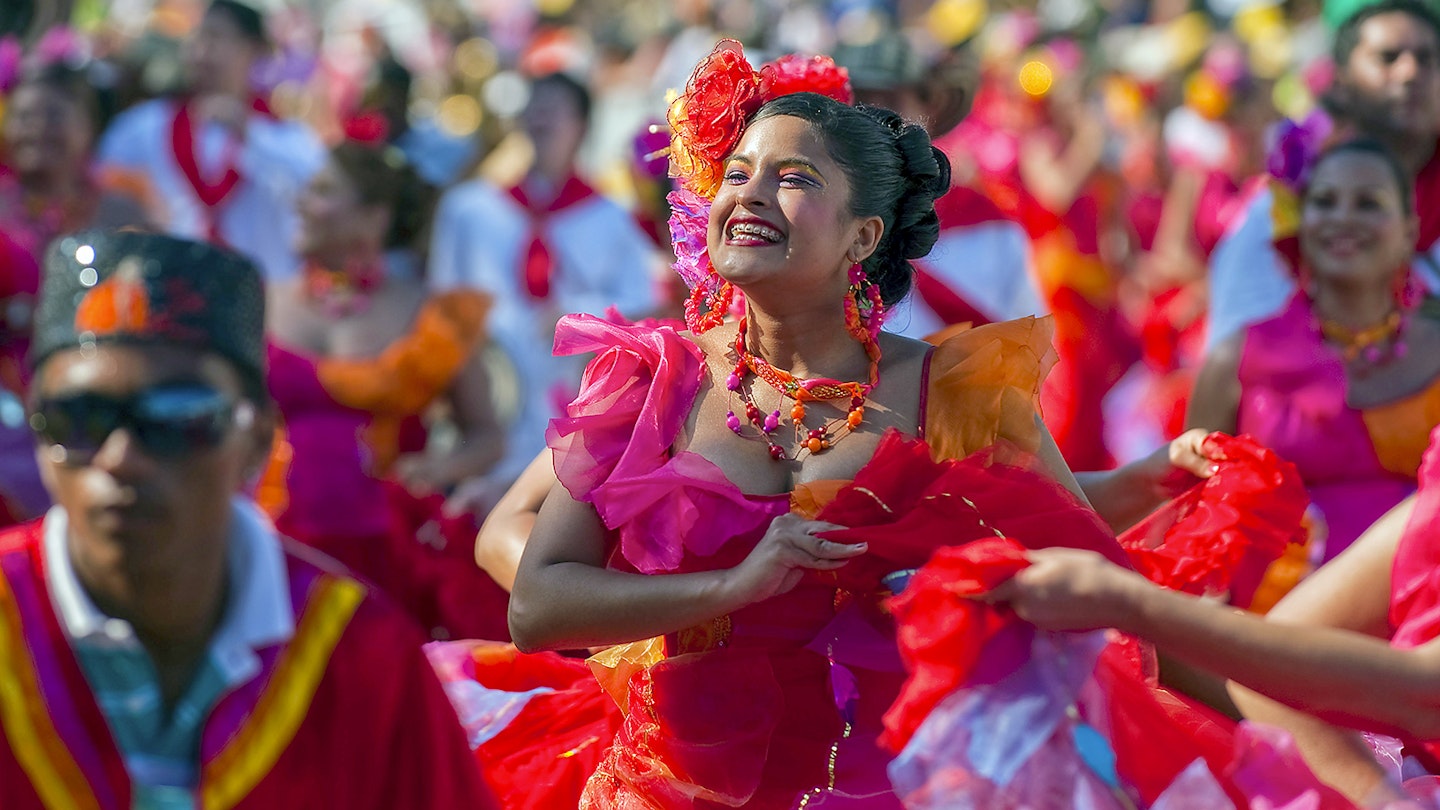Experience the Dance and Music Culture of Colombia
A drumbeat runs throughout Colombia, finding new rhythms to tap to as it flows from region to region. In the Caribbean, the music is expressed through a blend of African and indigenous influences, sweeping participants into seductive turns and poses. Meanwhile, down in the Pacific, classic styles find new form with fancy footwork and modern beats. So enrapturing are these cadences that they’ve managed to shimmy their way into cultures all over the world.
Discover a remarkable side of Colombia by learning the dance and musical styles that help define its regional cultures.
Cumbia
Cumbia music and dance takes different forms throughout Latin America, yet it is believed to have originated in the Magdalena department in the Caribbean region of Colombia. Once a dance of courtship, cumbia fuses African percussion with indigenous wind instruments, resulting in infectious rhythms that beckon you to your feet.
Every year in August, the small Caribbean community of El Banco hosts a National Cumbia Festival for four days, treating locals and travelers to vibrant cumbia dance competitions, concerts from emerging musicians, and lively parades. San Jacinto, another inland village, plays a pivotal role in cumbia history; it’s where local indigenous people invented a flute-like instrument called the gaita. Popular groups like Los Gaiteros de San Jacinto hail from this tiny town. In Cartagena, Crazy Salsa offers introductory cumbia classes as well as other dance class options.
Porro
Hailing from the Sinu River area of the Caribbean coast is porro, a subgenre of cumbia that currently lends itself to ballroom dance. This orchestral style was favored by popular Latin American bands in the 1960s. While some say its popularity peaked during that era, a new movement is reviving it to its former glory. A large bombo drum guides the dance’s rhythm.
In Medellin, porro has been embraced by the younger generation and is taught in local dance schools like Dancefree. The city hosts an annual Festival Del Porro in the restored La Comuna 13 neighborhood, inviting visitors to learn and practice their moves, keeping the tradition alive. Additionally, the National Porro Festival takes place in San Pelayo in the Cordoba department, bringing together the most celebrated porro bands.
Salsa Caleña
In the 1970s, Cuban rhythms crossed the Caribbean Sea and made a home in the Pacific region surrounding Cali. A new style of salsa was born from this migration: salsa caleña. Drawing inspiration from cumbia, pachanga, and boogaloo, salsa caleña is recognized for its rapid steps and generous spins. This style has put Cali on the map as a worldwide salsa destination.
So embedded is the spirit of salsa in Cali that one cannot go far without being swept away by its enchanting melodies. Salsa not only dominates the radio waves, but many hotels and hostels also offer free classes to tourists. Clubs like La Topa Tolondra have nightly opportunities to practice your moves, and Cali hosts an annual World Salsa Festival every September.
Champeta
Champeta is a lively style of dance and music that was born in the 1970s by Afro-Colombians living in the Atlantic coastal regions around Cartagena, Barranquilla, and Palenque. This energetic dance is characterized by rapid hip movements, and the music seamlessly blends vocal, percussion, bass, and electronic elements, making it easy to catch the rhythm even if you haven’t memorized the steps.
Initially rejected by mainstream culture and categorized as the music of “thugs,” champeta’s reputation has since evolved. You will now frequently hear champeta featured in commercials and on the radio. The song lyrics celebrate the unshakeable spirit of Afro-Colombians, reminding listeners of the genre’s once-controversial roots.
A visit to Palenque, the first free Black community in the Americas, provides a glimpse into Colombia’s rich African history, where visitors often enjoy live performances highlighting champeta. The popular Bazurto Social Club in Cartagena hosts weekly live champeta performances and encourages locals to teach visitors a few dance moves.
Salsa Choke
Salsa choke is a contemporary take on salsa, reimagined in the Pacific region of Cali, Colombia. The term choke, which means “crash” in Spanish, aptly describes how dancers’ bodies bump and grind in this sexy dance.
Less than a decade old, salsa choke mixes reggaetón, electronica, and house music with rhythmic salsa loops, resulting in a uniquely Colombian sound. This style is especially popular among younger generations, as it is simpler than traditional salsa and does not require a dance partner. Salsa choke garnered worldwide attention during the 2014 FIFA Cup, when Colombia’s team showcased their moves in Brazil.
If you find yourself in Cali, head to Tin Tin Deo on a Thursday night to experience this captivating musical phenomenon in person. You may also encounter it played at the annual Feria de Cali, which takes place every December and features dances, music, food, and cultures from the region.





